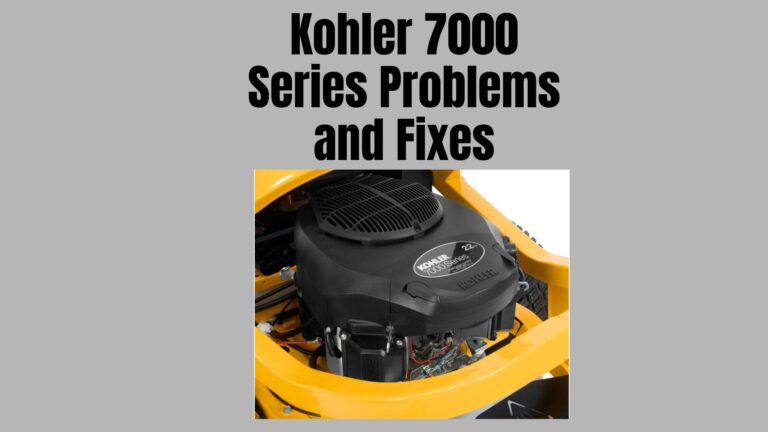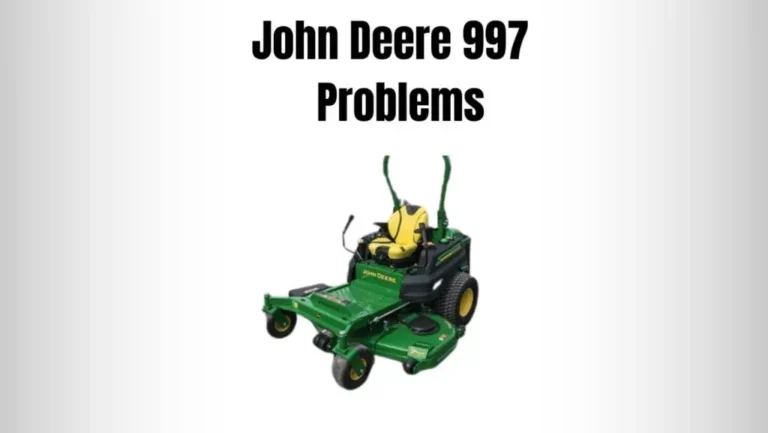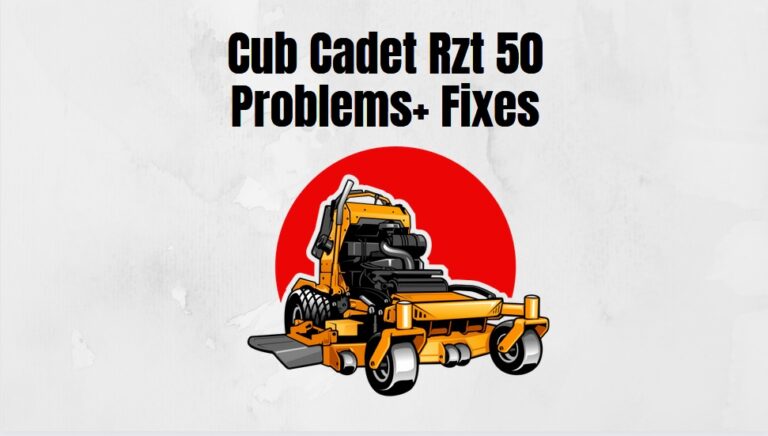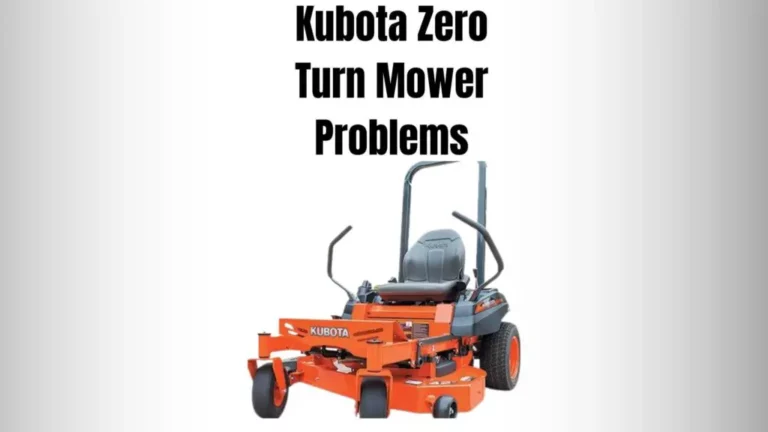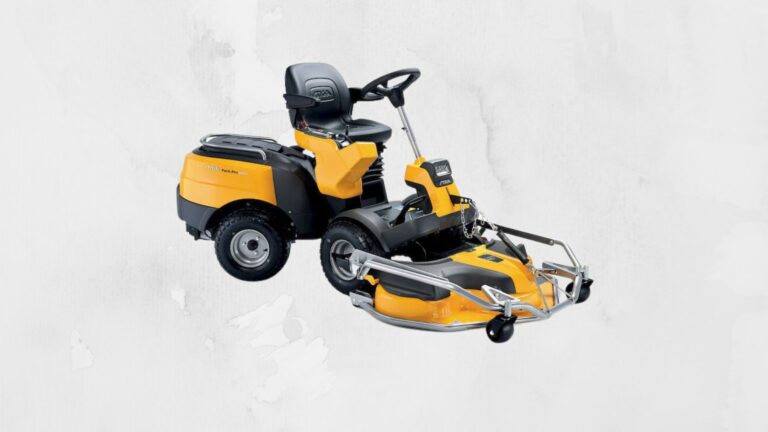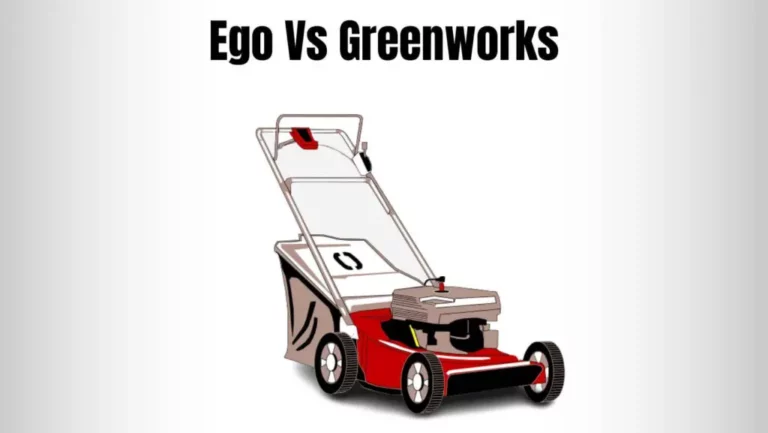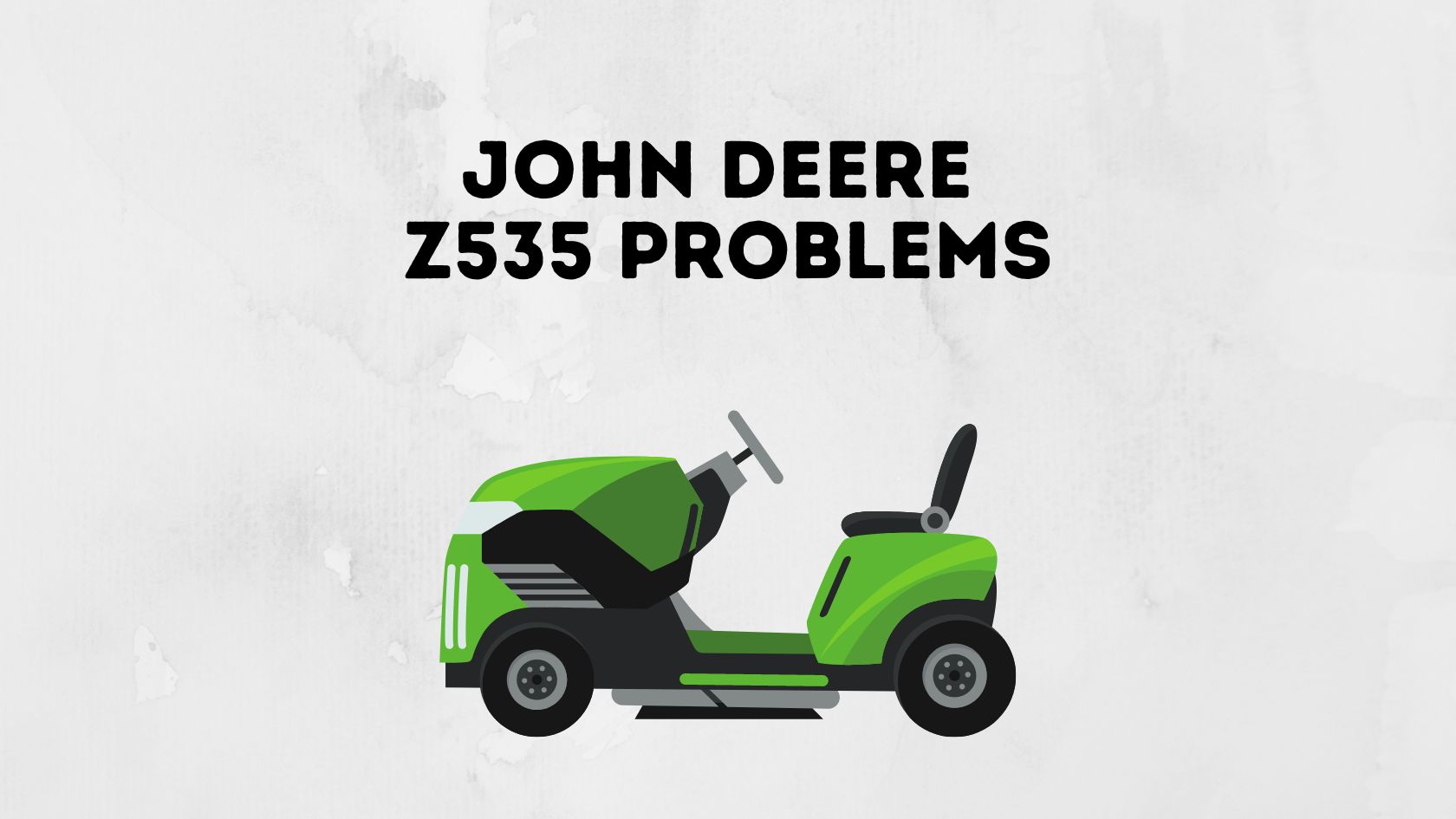
Are you a proud owner of the great John Deere z535m lawn mower? Do you need help understanding what’s wrong with your mower and why it won’t run properly?
In this blog post, we dive into the common problems many John Deere z535m owners experience, discuss how to accurately analyse them, and show you some tips for upkeep and maintenance that can help reduce these issues in the future.
John Deere Z535M Problems
1. Engine issues
Common engine problems with John Deere z535m include fuel system issues, air filter clogs, spark plug fouling and carburetor malfunctions.
Fuel System Issues
The John Deere z535m relies on a fuel delivery system to ensure the machine has enough power to operate appropriately.
If the fuel system isn’t working correctly, it can result in reduced power or even a complete engine shutdown.
This could be caused by a faulty fuel pump or clogged injectors that need to be cleaned or replaced accordingly.
Air Filter Clogs
One of the most common causes of engine problems on John Deere z535m is an air filter that becomes clogged with dirt and debris from regular use.
This restricts airflow to the engine resulting in poor performance and possible overheating if left unchecked for too long.
To fix this issue, you’ll need to replace your air filter regularly, as recommended by John Deere’s maintenance schedule, for optimal performance.
2. Electrical system problems
John Deere z535m owners were recently met with an unfortunate surprise when they began noticing electrical issues with their mower.
After working flawlessly for months and providing quality cuts, John Deere z535m owners suddenly discovered that the electric power to the mower’s blades had stopped working.
Trying different methods, from cleaning the wiring connections to resetting the machine, had no lasting effect. When John Deere technicians arrived to help, they had even worse news – all electrical components would need to be replaced.
The estimated cost was so high that John Deere owners were frustrated and helpless.
Fortunately, John Deere listened to their customers and offered a discount on repairs that came as a sigh of relief to many.
3. Transmission issues
Transmission issues can be frustrating for any driver. These issues can range from difficulty shifting gears to loss of power and excessive noise during operation.
This paragraph will discuss some of the expected transmission issues drivers may encounter.
Difficulty Shifting
One of the most common transmission issues is difficulty shifting gears.
This can manifest as the gears grinding or sticking, making it difficult to shift smoothly.
This issue can be caused by low transmission fluid levels, worn clutch plates or synchros, or a malfunctioning gearbox.
Loss of Power
Another common transmission issue is a loss of power, which can occur when the
transmission is not properly engaging with the engine.
This can cause a decrease in acceleration or even prevent the vehicle from moving altogether.
Loss of power can be caused by a range of issues, including low transmission fluid levels, a clogged transmission filter, or a worn clutch or torque
converter.
Excessive Noise During
Excessive noise during operation is another familiar transmission issue drivers may encounter.
This can manifest as whining, buzzing, or clunking noises during acceleration, deceleration, or shifting gears.
Excessive noise can be caused by worn or damaged bearings, gears, or other
transmission components.
4. Belt problems
Belt problems can cause issues with the functionality of a mower deck, which can be frustrating for anyone who relies on their lawn mower for regular lawn maintenance.
This paragraph will discuss common belt problems that can cause the mower deck to stop functioning correctly or even detach from the machine.
Worn or Damaged Belts
One of the most common belt problems is worn or damaged belts.
Over time, the belts that drive the mower deck can wear down, crack, or even
break.
This can cause the mower deck to stop functioning or operate poorly,
leading to uneven mowing or damage to the lawn.
Improper Tension
Another common belt problem is improper tension. The belts that drive the mower deck must be appropriately tensioned to function correctly.
If the belts are too loose, they can slip and cause the mower deck to stop functioning or detaching from the machine.
However, if they are too tight, they can put excessive strain on the machine, leading to premature wear or damage.
Misaligned or Damaged Pulleys
Misaligned or damaged pulleys can also cause belt problems that can affect the functionality of the mower deck.
Pulleys are responsible for guiding the belts that drive the mower deck, and if they are misaligned or damaged, they can cause the belts to slip or become damaged.
This can lead to the mower deck stopping or detaching from the machine.
5. Tire issues
Tire issues can be frustrating for any lawn mower operator. Uneven cuts and flat tires can make lawn maintenance difficult and time-consuming, leading to frequent replacement and maintenance.
This paragraph will discuss some common tire issues that can cause these problems.
Uneven Tire Wear
One of the most common tire issues is uneven wear. This can cause the mower deck to cut unevenly, leaving ridges and patches of uncut grass.
Uneven tire wear can be caused by various factors, including incorrect tire pressure, misaligned mower deck, or worn or damaged wheel bearings.
Flat Tire
Flat tires are another common issue caused by various factors, including punctures, worn or damaged tire sidewalls, or improper tire pressure.
Flat tires can be inconvenient and time-consuming to replace and damage the mower deck or other machine components.
Bent or Damaged Rims
Bent or damaged rims can also cause tire issues that can affect the functionality of the mower.
Bent or damaged rims can cause the tire to lose pressure, leading to uneven cuts or flat tires.
Also, damaged rims can cause excessive vibration or damage the machine’s mower deck or other components.
6. Durability concerns
The durability of lawnmowers, especially those used frequently or in extreme environments, is often a concern.
The mower’s body and components can deteriorate due to rust and wear and tear, resulting in reduced performance and reliability.
We will discuss some common lawn mower durability concerns in this paragraph.
Rust
Rust is a common durability concern affecting the mower’s body and components.
Rust can cause components to weaken or even break, leading to reduced performance or complete failure.
Additionally, rust can cause the mower to become less aesthetically pleasing, which can be particularly frustrating for homeowners who take pride in the appearance of their lawn.
Wear and Tear
Wear and tear are another common durability concern affecting lawnmowers.
The constant vibration and movement of the mower can cause components to wear down over time, leading to reduced performance or complete failure.
Additionally, components such as blades and belts can become dull or worn, leading to poor cutting performance or other issues.
Environmental Factors
Environmental factors can also contribute to durability concerns for lawn mowers.
Exposure to the elements, such as sunlight, rain, and extreme temperatures can cause components to deteriorate or break down over time.
Additionally, exposure to debris such as rocks, sticks, and other debris can cause damage to the mower’s body and components.
7. Poor performance
Poor wet or uneven terrain performance is expected for lawnmowers, particularly those with smaller wheels or less powerful engines.
Wet or uneven terrain can cause the mower to become stuck or unstable, leading to reduced cutting performance or even damage to the mower.
This paragraph will discuss some common issues that can cause poor wet or uneven terrain performance.
Lack of Traction
A lack of traction is one of the most common issues that can cause poor wet or uneven terrain performance.
Mowers with smaller wheels or less powerful engines may struggle to gain traction in wet or uneven conditions, causing the mower to become stuck or unstable.
Additionally, worn or damaged tires can further reduce traction, making it even more difficult for the mower to navigate wet or uneven terrain.
Uneven Cutting Performance
Another issue that can cause poor performance in wet or uneven terrain is uneven cutting performance.
Uneven terrain can cause the mower deck to become unlevel, leading to uneven cuts and missed patches of grass.
Wet grass can clump together, causing the mower to clog or stall.
Stability
Stability is also a concern in wet or uneven terrain, particularly on hills or steep inclines.
Mowers with a high centre of gravity or poorly designed wheelbase can become unstable or tip over in these conditions, causing damage to the mower or even injuring the operator.
Conclusion
These are the most common John Deere Z535M issues.
Regular maintenance and repair can help ensure your mower is operating at its peak performance, but keep in mind that some issues may require more extensive repairs or even replacement parts.
John Deere Turbo Series 2 Problems

I’m David man behind Lawn Mowerly; I’ve been dealing with lawnmowers and Tractors with my father since I was a kid. I know every make and model and what each one is capable of and love helping people find the perfect lawn mower for their needs.

